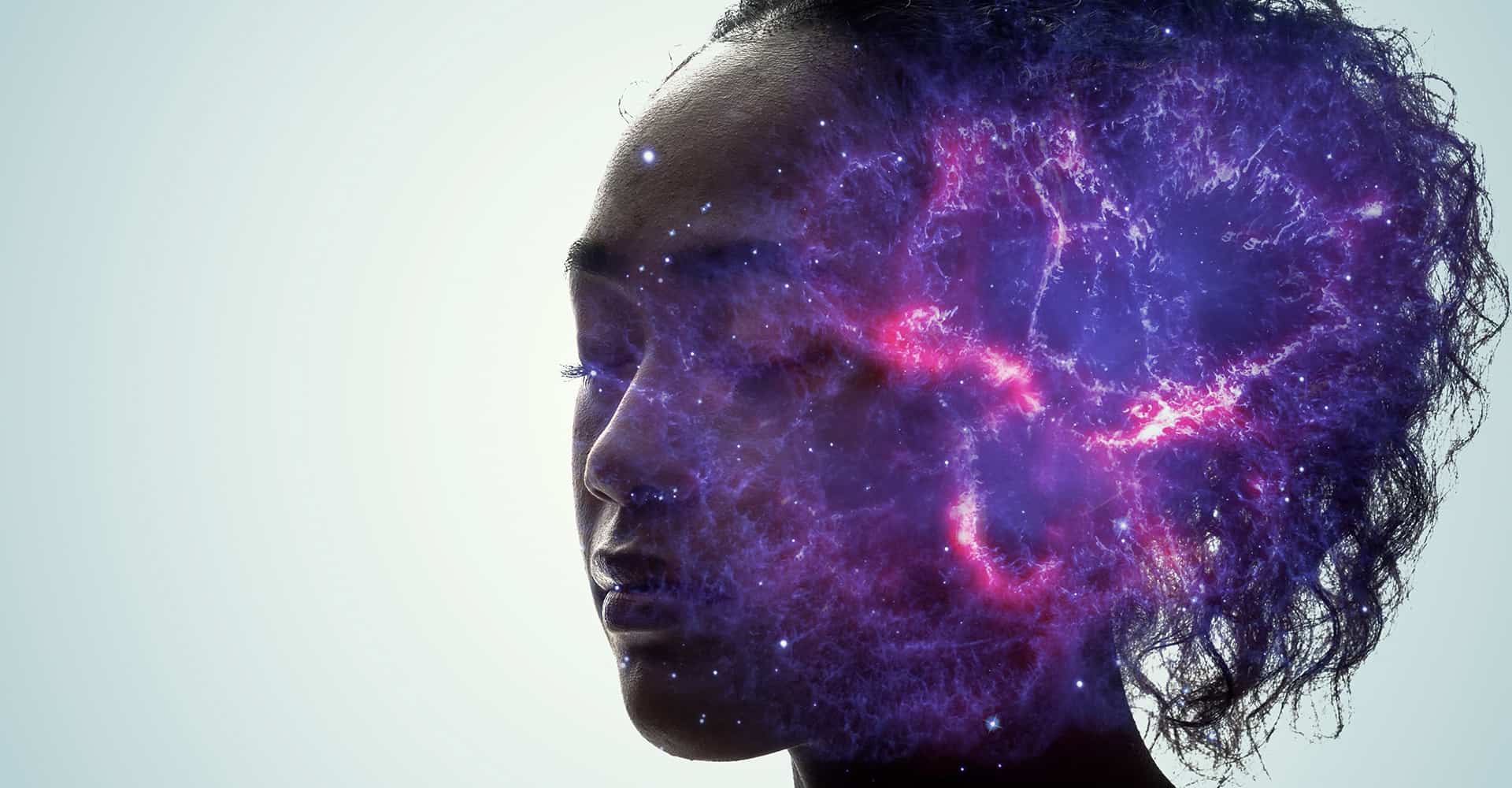Psychedelics, particularly ketamine, are being recognized increasingly for their potential in end-of-life (EOL) and palliative care. They can help patients face terminal illnesses with less fear and anxiety and provide comfort to their families. This contrasts with traditional treatments, which often involve opioids and sedatives that may reduce cognitive function.
Ketamine is unique in that it can simultaneously and rapidly treat EOL anxiety, depression, as well as pain. Additionally, for many EOL patients who are unable to tolerate oral medication or are tired of being given medication via an IV, ketamine can be administered via simple Intramuscular (IM) injection. No other traditional or psychedelic medication is as versatile or as powerful as ketamine in EOL care. Let’s dive into the details.
Understanding Ketamine
History and Development of Psychedelics and Ketamine
Psychedelics have been used in healing rituals for centuries, particularly in Indigenous societies.
The first appearance of a psychedelic substance in Western medicine occurred when Swiss chemist, Albert Hofmann, synthesized LSD in 1938. Despite initial interest in the 1950s and 60s, research into the medical applications of psychedelics slowed due to unfavorable media coverage, tighter regulations, and the classification of many psychedelics as Schedule 1 substances under the Controlled Substances Act of 1970. Interest was renewed in the 1990s, with scientists in Switzerland, Germany, and the United States studying the potential medical benefits of psychedelics.
Ketamine, which is often referred to as a psychedelic due to its ability to induce visions and mystical experiences, is classified as a dissociative anesthetic. It was approved for use as an anesthetic by the FDA in 1970. Research into the psychiatric applications of ketamine began in earnest in the 1990s, when scientists began to explore the drug’s effects on depression. The first clinical trial demonstrating its rapid-acting antidepressant effects was published in 2000.
Since then, research into ketamine’s potential as a treatment for mental health, chronic pain, and neurological conditions has been ongoing.
Unraveling the Mechanisms of Ketamine
Ketamine is known to possess multiple mechanisms of action, contributing to its analgesic, anesthetic, and potentially antidepressant effects. Some of its key mechanisms include:
- NMDA Receptor Antagonism – Ketamine’s primary mechanism of action is antagonism at the NMDA receptor, a type of glutamate receptor in the central nervous system (CNS). By blocking these receptors, ketamine prevents the flow of ions through the NMDA channels, disrupting the propagation of pain signals and producing a state of anesthesia.
- α-amino-3-hydroxy-5-methyl-4-isoxazolepropionic Acid (AMPA) Receptor Potentiation – Although ketamine antagonizes NMDA receptors, it indirectly enhances the functioning of AMPA receptors, another type of glutamate receptor. This mechanism has been suggested to play a significant role in ketamine’s fast-acting antidepressant effects.
- Monoaminergic Effects – Ketamine interacts with various monoaminergic systems in the brain, such as serotonin and dopamine pathways. This could contribute to its mood-enhancing and psychotomimetic (psychosis-mimicking) effects.
- Effects on Neuroplasticity and Neurogenesis – Ketamine has been shown to stimulate neuroplasticity (the brain’s ability to rewire itself) and neurogenesis (the creation of new neurons). These effects are thought to be important for its potential antidepressant action.
- Opioid Receptor Interaction – Some evidence suggests that ketamine may interact with opioid receptors in the brain, potentially contributing to its analgesic effects.
- Effects on Inflammatory Pathways – Ketamine might have anti-inflammatory effects, modulating the immune response. This could potentially be beneficial in certain inflammatory and pain conditions.
- HCN1 Channel Blockade – Ketamine is also known to block hyperpolarization-activated cyclic nucleotide-gated channel 1 (HCN1), which can contribute to its analgesic effects.
Ketamine’s role in mental health treatment is particularly significant for conditions that are resistant to other treatments. These include severe depression, post-traumatic stress disorder (PTSD), and certain anxiety disorders. The rapid action of ketamine, often providing relief within hours, is a stark contrast to the weeks or even months it can take for traditional antidepressants to take effect. This rapid response can be life-changing for individuals suffering from severe mental health conditions, particularly those with suicidal ideation. In addition, when treating anxiety, ketamine minimizes the risk of addiction to anti-anxiety medications such as benzodiazepines.
Ketamine is not just fast-acting, its effects are relatively long-lasting. Studies have shown that a single dose of ketamine can provide relief from symptoms for up to a week. This long-lasting effect, combined with its rapid onset, makes ketamine a powerful tool in the arsenal of mental health treatments.
What is End-of-Life Care?

End-of-life care aims to provide comfort, dignity, and quality of life to those in their final stages of life. It is not just about managing physical symptoms, but also about providing psychological, social, and spiritual support. It involves understanding and respecting the person’s wishes and ensuring that their remaining time is spent in as meaningful a way as possible. End-of-life care often presents challenges like managing complex physical symptoms, emotional distress, spiritual concerns, and coordinating care across different settings and healthcare providers.
Ketamine-Assisted Therapy in a Nutshell
Ketamine-assisted therapy is a novel approach to mental health treatment, combining the use of ketamine with the support of a therapist or trained trip guide. This unique combination facilitates a deeper exploration of the patient’s inner world and can lead to profound insights and rapid relief from symptoms. KAT is particularly beneficial for individuals who have struggled to find relief from their symptoms through traditional talk therapy. The dissociative and pain-relieving properties of ketamine can help individuals work through various mental and emotional challenges in a controlled environment.
During a typical KAT session, a patient is administered the prescribed dose of ketamine. The environment is extremely comfortable and kept as relaxed as possible. Headphones are worn, delivering a carefully selected soundtrack for the patient’s journey, with eye masks in place to restrict distractions. The medication can take about 10-15 minutes to kick in. Patients then start to feel the effects of ketamine and, for the next 45 minutes or so, explore whatever arises under the supervision of their guide.
Ketamine’s dissociative effects relax the mental barriers that often arise when trying to address painful emotions. With these barriers down, patients can access and confront these issues without fighting against the mind’s natural defenses. After the experience, the patient and guide sit together and discuss what came up. Patients are encouraged to integrate what they learned from their ketamine journey and work through their challenges in the weeks following treatment.
The Impact of Ketamine on the Brain

Brain-Derived Neurotrophic Factor (BDNF)
Ketamine works by blocking NMDA receptors in the brain, leading to an increase in the production of a neurotransmitter called brain-derived neurotrophic factor (BDNF). BDNF is a type of protein, specifically a neurotrophin, found in the brain and spinal cord that plays a crucial role in neuronal survival and growth, synaptic plasticity, and the regulation of various cognitive functions.
Here’s more detail on BDNF’s functions:
- Neuronal Survival and Growth – BDNF provides essential support for the survival of existing neurons and encourages the growth and differentiation of new neurons and synapses. This includes both peripheral and central neurons.
- Synaptic Plasticity – Synaptic plasticity is the ability of synapses to strengthen or weaken over time, which is essential for learning and memory. BDNF plays a key role in this process, particularly in long-term potentiation, a mechanism involved in the formation of certain types of memory.
- Cognitive Functions – BDNF is crucial in supporting a variety of cognitive functions, including learning, memory, and higher thinking.
- Mood Regulation and Depression – BDNF may also have a role in mood regulation. Lower levels of BDNF have been found in individuals with depression, and antidepressant medications appear to increase BDNF levels.
- Neuroprotection – BDNF has a neuroprotective role, shielding neurons from various insults. It’s being investigated for potential benefits in neurodegenerative disorders such as Alzheimer’s and Parkinson’s diseases.
As you can see, BDNF is crucial for the healthy functioning, growth, and survival of neurons, and it’s essential for learning, memory, and other cognitive functions. Changes in its levels or activity are linked to several neurological and psychiatric disorders.
Glutamate Regulation
In addition to BDNF, Ketamine is known to regulate glutamate levels in the brain. Glutamate is the most abundant excitatory neurotransmitter in the brain, playing a crucial role in synaptic plasticity, which is important for learning and memory. It interacts with several types of receptors, including NMDA and AMPA receptors, among others.
However, when it comes to brain and mental health, the role of glutamate is complex. Imbalances in glutamatergic transmission have been implicated in several psychiatric conditions, including mood disorders like depression, anxiety, and schizophrenia.
- Depression – Studies have found alterations in glutamate levels in the brains of individuals with major depressive disorder (MDD). It’s believed that hyperactive glutamatergic signaling might contribute to neuronal damage in MDD, a concept known as excitotoxicity.
- Anxiety – Glutamate dysregulation has also been implicated in anxiety disorders. An imbalance between glutamate and GABA, the primary inhibitory neurotransmitter, may play a role in the development of these conditions.
- Schizophrenia – Imbalances in glutamate signaling, particularly involving NMDA receptors, have been implicated in the pathophysiology of schizophrenia.
Ketamine, as a potent NMDA receptor antagonist, has been found to have rapid-acting antidepressant effects. Its mechanism of action provides a unique window into the role of glutamate in mental health. By blocking NMDA receptors, ketamine decreases glutamatergic signaling. However, this blockade indirectly leads to a surge of glutamate release, causing a rapid increase in the activation of AMPA receptors, another type of glutamate receptor. This enhanced AMPA signaling then activates intracellular signaling pathways leading to increased expression of BDNF. This process is believed to be critical to ketamine’s antidepressant effect, possibly leading to the strengthening of beneficial connections between neurons, or “synaptic potentiation,” and promoting resilience against stress-induced changes in the brain.
Ketamine’s impact on the brain is not just limited to its many mechanisms. The drug’s psychedelic properties can induce hypnotic, dream-like, or even fully dissociative trance states, depending on the dosage and route of administration. These trance-like states can help patients access and address painful emotions and memories in a controlled environment, facilitating therapeutic breakthroughs at a much faster rate than traditional talk therapy.
The Potential of Ketamine-Assisted Therapy in End-of-Life Care

Current Research on Ketamine’s Effects
Ketamine has shown promise in the treatment of various mental health disorders, including anxiety, depression, and pain. It has been found to rapidly reduce symptoms of anxiety and depression in patients with treatment-resistant depression. Furthermore, ketamine has a significant effect on reducing pain intensity.
Ketamine and Existential Distress
Existential distress, a common experience in end-of-life care, can manifest as feelings of hopelessness, loss of meaning, and fear of death. Ketamine has been found to alleviate these symptoms, providing psychological relief.
Case Studies of Ketamine Therapy in End-of-Life Scenarios
Several case studies and anecdotal evidence highlight the potential benefits of ketamine therapy in end-of-life care. These studies suggest that ketamine and other psychedelics could provide meaningful experiences and psychological relief during one of life’s most challenging moments – its end.
Psychedelics and Palliative Care
Unlike standard medical treatments, psychedelics can often produce a sustained effect on mood and feelings of well-being after only a single dose. To maximize their potential benefits, it is recommended that patients engage with psychotherapy before and after psychedelic treatment. This approach typically involves screening for contraindications, multiple pre-treatment counseling sessions, a single dose of psychedelic medication administered in a safe and comfortable session, and multiple post-treatment counseling sessions.
Psychedelics offer many potential uses in palliative medicine. Current medications for anxiety, depression, and pain can have burdensome side effects and often fail to address the existential distress that patients with life-limiting conditions face. Many studies suggest that psychedelics have limited negative side effects and can be helpful for patients with serious illness. For patients with life-limiting illness who are experiencing significant existential distress, anxiety, or depression that has been resistant to standard treatments, psychedelic therapy may be an excellent option.
The Role of Ketamine-Assisted Therapy for Grieving Family Members

The grieving process can be a long and difficult journey, often marked by feelings of sadness, anger, and confusion. Traditional grief counseling can provide some relief, but it may not be enough for those experiencing intense or prolonged grief. This is where ketamine-assisted therapy can play a significant role. Research has proven ketamine to provide rapid resolution of grief. By providing a different perspective on feelings and alleviating depressive symptoms quickly, KAT can offer immediate relief to those struggling with their grief.
Moreover, KAT is not just about providing immediate relief. The therapy can also help individuals develop coping strategies and resilience, equipping them with the tools they need to navigate their grief in the long term. This aspect of KAT is particularly important as it empowers individuals to take control of their grief and move forward in their healing process.
The Future of Ketamine-Assisted Therapy in End-of-Life Care
While psychedelics are currently mostly used as investigational therapies, this is likely to change in the near future. Ketamine has been used off-label for decades to treat a broad range of mental health, chronic pain, and neurological conditions for decades. Other psychedelics, particularly psilocybin, are being used in clinical trials for refractory anxiety, depression, and existential distress. 3,4-Methylenedioxymethamphetamine (MDMA), commonly known as ecstasy, is set for FDA approval for the treatment of PTSD as early as late 2023. As the literature supporting the efficacy of psychedelics grows and advocacy for their use expands, psychedelic therapies will become more mainstream in the near future.
Conclusion
In conclusion, ketamine-assisted therapy offers a promising approach to end-of-life care. It can help patients and their families cope with the physical and emotional challenges of terminal illness and improve their quality of life. As research continues, we can expect to see more widespread adoption of this innovative therapy.










 Daytryp Health has taken
Daytryp Health has taken  The
The 